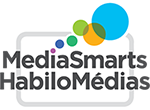Described Video
Stop-Motion Animation Instant Expert Video
The video opens on a woman, Jessie Curell, with brown hair, wearing a black shirt. She is in front of a white wall. In the upper right of the video is a circular mirror. Below her is a name plate identifying her as Jessie Curell, Media Educator, Hands on Media.
The scene changes to a PowerPoint presentation. The title screen reads, “Teaching Stop Motion Animation in Your Classroom. Guest Lecture Hosted by Jessie Curell.” Below is the Hands On Media Education logo.
Several photographs follow. In the top row, from left to right, are images of students using laptops in a classroom, a teacher on a video call and the teacher taking a selfie. The second row, from left to right, shows a woman giving a presentation with a screen reading “Learning Online, our lives begin to end the day we become silent about the things that matter,” and other images of the instructor giving a presentation.
The next slide presents the “Pillars of This Workshop.” They are media and digital literacy.
Another slide indicates Media Literacy, the ability to access, analyze, evaluate, and produce media. The presentation indicates Digital Literacy, having the skills you need to live, learn, and work in a society where communication and access to information is increasingly through digital technologies like internet platforms, social media, and mobile devices.
Next is a “Workshop Outline” and details the learning objectives, equipment, examples, and resources.
The last slide shows “Workshop Learning Objectives.” The objectives are to form an understanding of key concepts within media and digital literacy; form an understanding of Stop Motion Animation; feel inspired to teach students to create videos with meaning while developing media and digital literacy skills; and understand how this activity can be integrated into coursework.
The next scene shows the instructor speaking while next to an image depicting children working with a tablet and figures on a green mat. The screen’s title is “What is Stop Motion Animation.” The instructor describes the use of stop motion animation.
The instructor again speaks to the camera, reiterating that the goal of the workshop is to introduce students to the world of media and to learn how to create it. The screen focuses on an image that says “What is Stop Motion Animation?” with an image showing children doing stop motion animation. The presenter explains that stop motion animation gives inanimate objects life and that students can make magic and gives examples like clay characters, chairs, water bottles, pencils, etc. Then the screen changes to read “Why does Stop Motion Animation work so well?” and lists that it is easily adaptable to any age and classroom theme and provides curriculum links and says that it really provides opportunities for self-expression and identity, and is an engaging, blended-learning media creation activity. Next, the presenter explains the equipment they recommend, including a table that lists the hardware, the application, and the application cost. Finally, the presenter provides the process for teaching stop motion animation, which includes pre-production, production, and post-production.
We next see a white board that lists ‘3 Key Principles of Animation’ and has a drawing of a walking stick figure. The instructor then explains how to create an animation by repeating the steps of taking an image, moving the character slightly, and taking another photo. She recommends moving the character the size of an ant. Following this segment, the video moves on to showcase two examples of animation. The first video explains ‘The Inequality of the Estates.’ The next animation features a car driving through a mountainous watercolor setting. The animation comes to an end and the text ‘BLACK LIVES MATTER YO!’ is shown on a whiteboard. The video lists the names of the people who made the animation as well as the partnering organizations. The video’s closing content presents the steps to teaching stop-motion animation. The first of the three steps, pre-production, is displayed. In this stage, students begin by choosing a background, choosing 2-3 characters, beginning-middle-end development, and building characters. The video then features examples of storyboard layouts.
Next, is a section marked number 2, labeled: Production. There is a description below this, which reads: Begin setting-up animation stations including tripod, iPad/camera, background, characters, and introduce different roles on film crew.
Next, the instructor begins to talk about the team roles. The list includes: Director, Camera Person, Set Designer, and Animator X 2. Under each title, there is a brief description of the job’s responsibilities.
She continues by explaining the post-production, which included reviewing the animation together, deleting unwanted frames, adding voice, sound effects, music tracks, and text.
Next, there’s another slide with the title: Group & School Screening. The text reads: “A chance to present, celebrate, practice public speaking, reflect on experience, plan next projects. With student permission, you can make screening public & invite family, school principal, other classes, leaders, etc.”
The next slide is titled: Resources. It includes behind-the-scenes links to animated films such as Shaun the Sheep, Fantastic Mr. Fox, and The Nightmare Before Christmas. The next section is titled: Storyboard Template. It has a link to a web page, where it can be downloaded. The final section reads: Stop Motion Studio User Guides, and has a link to a webpage.
